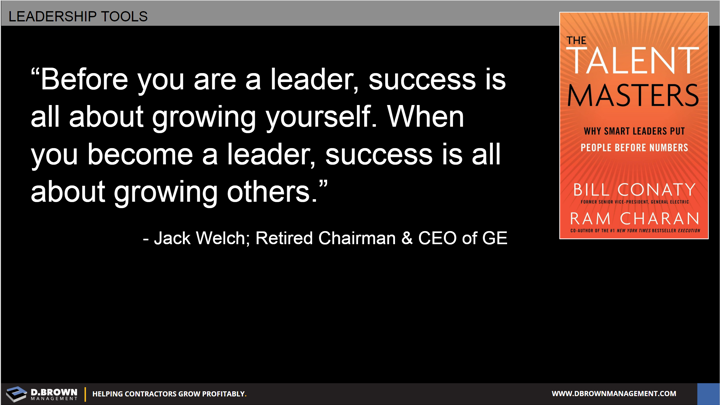If you don’t absolutely love developing other people then you will never truly enjoy the many challenges of leadership.
If you truly enjoy the journey and especially the many opportunities to develop people along the way then you will be fulfilled in your life regardless of your final destination.
A Simple Leadership Mission for Everyone:
Look at Maslow’s Hierarchy of Needs and simply make it your mission to help as many people climb up that hierarchy towards self actualization as you can.
Wrap your particular mission around a theme that resonates with you. For example our theme is helping contractors grow profitably while building stronger businesses for the next generation.
What is the theme of your leadership mission?
Book - The Talent Masters

